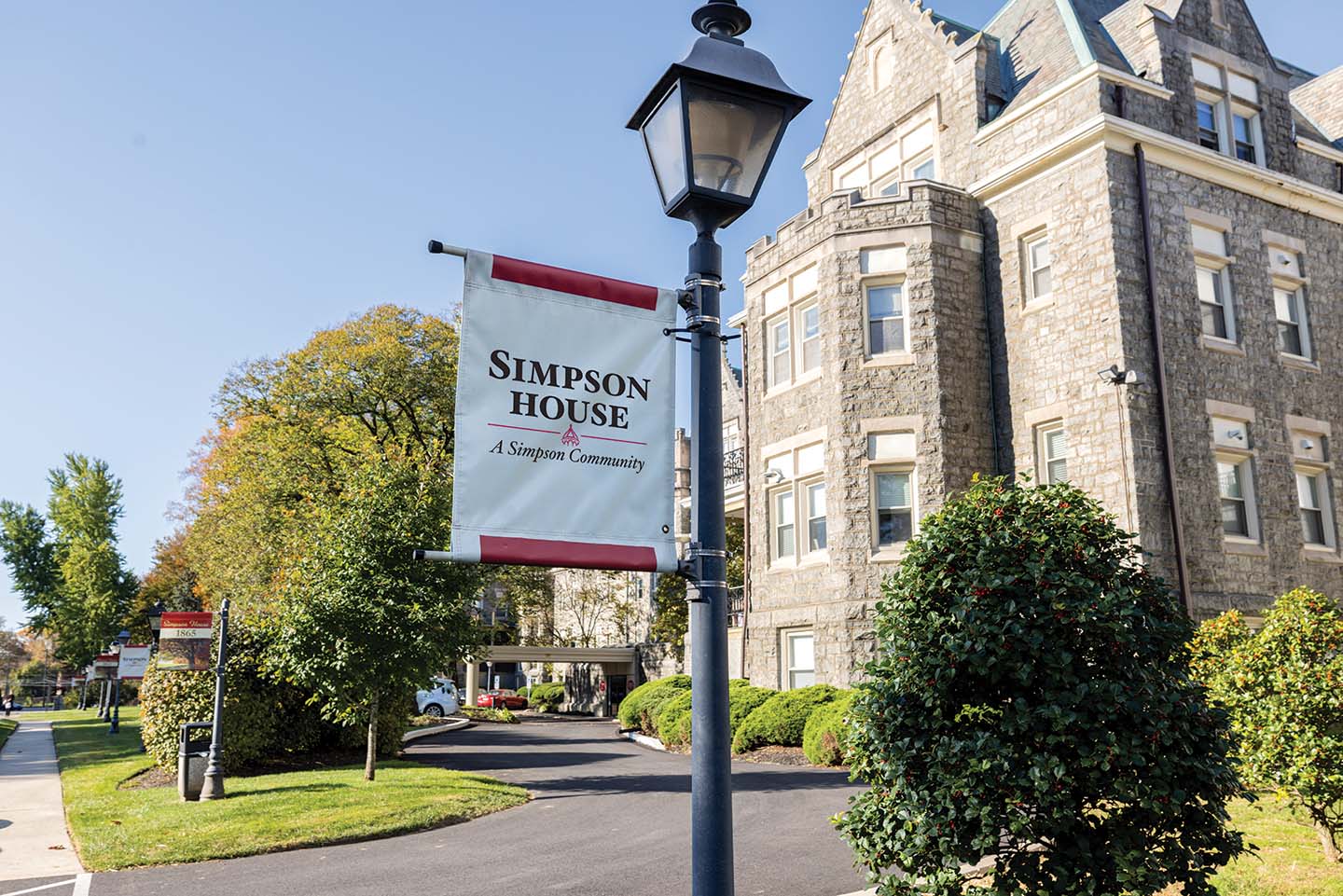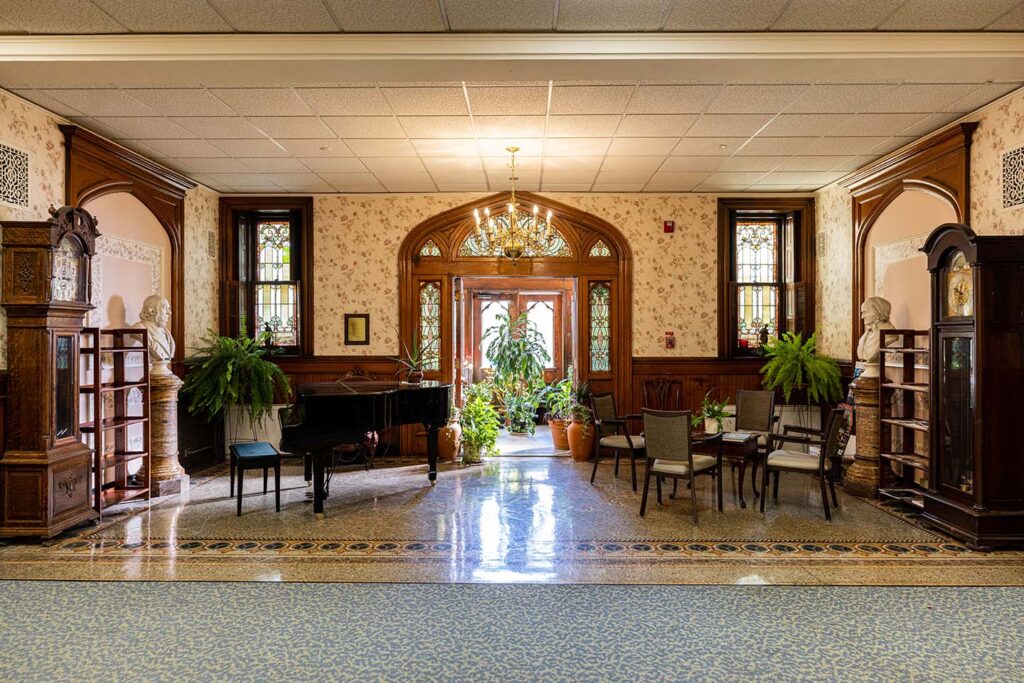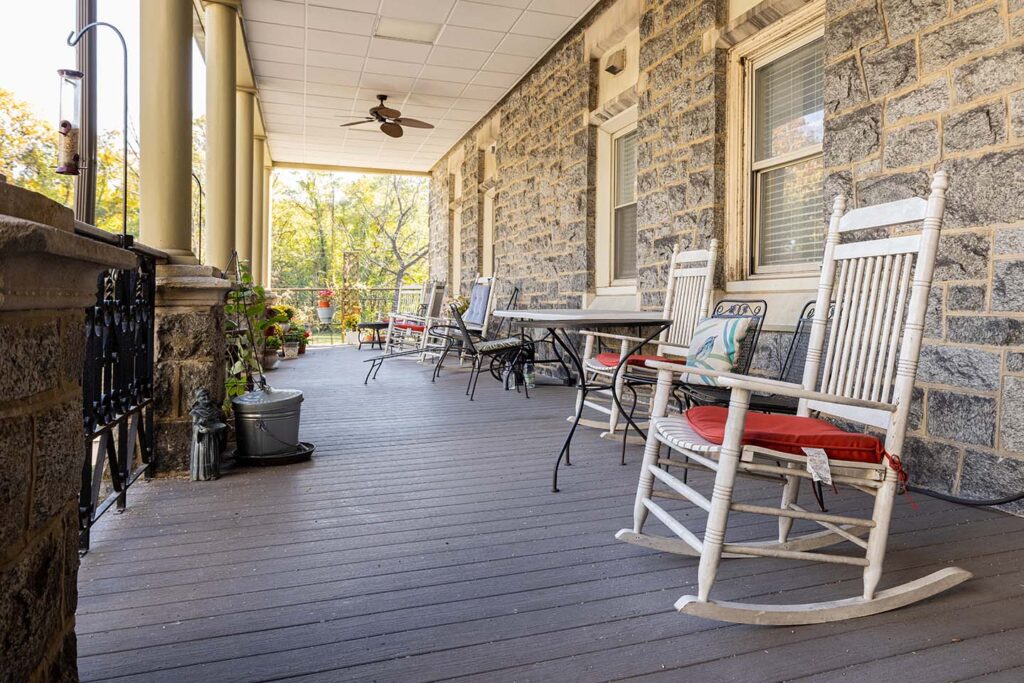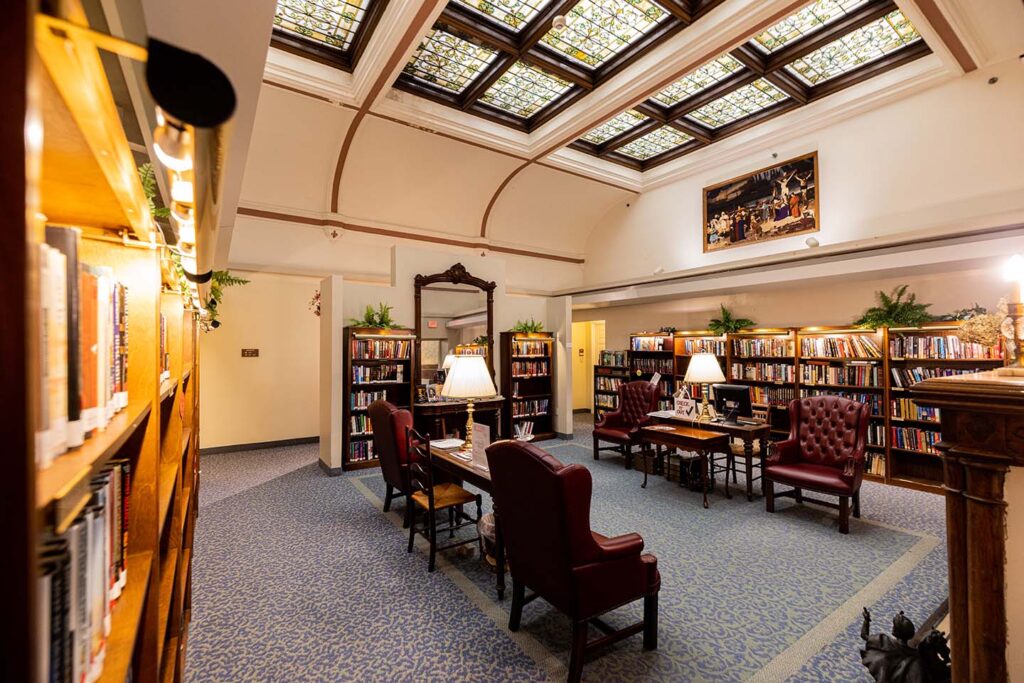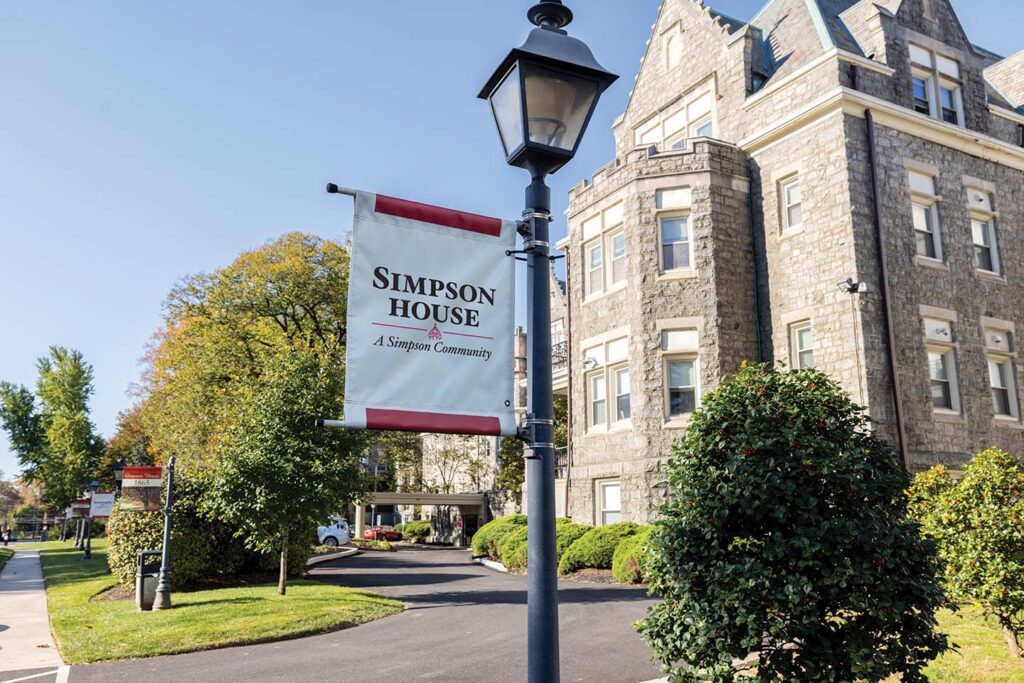“If these walls could talk….” It’s a thought you might often have as you stroll through the English Gothic “Olde Main” building on the Simpson House Belmont Avenue campus. The late 19th-century structure has seen its share of history, but the story of Simpson House, Simpson’s oldest community, predates the building.
A history of caring
“Continuing care retirement communities—CCRCs—were born out of Philadelphia, going back to 1772 with the Kearsley Home. They were founded for those that had lived an upright and godly life, were members of good standing of the Church of England, but had lived beyond their means. Simpson House was part of this trend,” explains Rev. David Adam, who joined Simpson House as director of personnel in 1984 and retired in 2011 as executive vice president. His family has been involved with Simpson House for more than 12 decades and he is, by avocation, the keeper of the Simpson House history and archives.
Today, Simpson House is the oldest CCRC historically related to the United Methodist Church. The organization’s roots were planted in June 1865, in the aftermath of the Civil War. The Ladies Christian Commission of the Methodist Episcopal Church of Philadelphia, whose members had nursed soldiers in tent hospitals, wanted to find a new way to direct their energies. They met and formed “The Ladies United Aid Society of the Methodist Episcopal Church in the City of Philadelphia for the benefit of AGED AND INFIRM MEMBERS.” Those founding mothers included Jane Henry, the widow of the Rev. John Henry, as well as Mrs. Ellen Holmes Verner Simpson, wife of Bishop Matthew Simpson.
In October of that year, the women established what came to be called “The Methodist Episcopal Home of the Aged” in a rented house on 10th Street near Poplar. They later moved to a colonial mansion on Lehigh between 12th and 13th streets. With renovations, it accommodated 25 residents, and it wasn’t long before it was clear that a larger building would be necessary. In 1870, construction began on a new building on the site—one that was designed specifically for older persons and could accommodate 100 residents. Rev. Adam’s great-grandmother, Sarah Jane VanWinkle Markle, lived nearby.
Driven by women
“She would have been 14 at the time it opened,” says Rev. Adam. “She may have greeted residents as she walked by and they sat on the porch. Perhaps it was then that her keen interest was piqued, because in her adult life she became involved as a volunteer on the Women’s Board of Managers at the home.”
Every church had representation in what was often simply called “The Home.” It was run by a Women’s Board of Managers, which had hundreds of members and an executive committee of about 35 women. Mrs. Simpson, often called Mrs. Bishop Simpson, was president of the Board of Mangers from its inception until her death in 1897.
“Male trustees did some things, mostly financial, but the women did the day-to-day running of the organization,” Rev. Adam says. In more recent times, other women in his family also served on the Board of Managers.
A building on the vanguard: the cornerstone of today’s campus
Over the years, a larger building was needed, and the Lehigh Avenue site offered no space to expand. Mrs. Bishop Simpson, approached Col. Joseph Bennett, a philanthropist who had previously donated land near the Belmont Plateau for the Methodist Episcopal Orphanage.
Bennett donated a parcel adjacent to the orphanage for the home for the aged. On June 25, 1898, the cornerstone was laid for the building that has come to be known as Olde Main. It was designed by the architectural firm Hales & Ballinger and built of granite with limestone trim. Due the death of the contractor during the project, the building wasn’t finished and occupied until 1899.
The home was full of innovations, including gas and electric lighting, with an electrical generating plant that operated until 6 p.m., when gas lighting took over. The building had a central heating system, a hydraulic elevator and a filtered water system that held a day’s supply in reserve in the event of a service interruption. Rooms were simple and sized 9-foot by 12-foot each with a 1-foot-deep closet and shared bathrooms in hallways. The home was designed for those of modest means. Still, the common rooms were grand, so residents felt like they were surrounded by luxury. The main lobby had a terrazzo floor, and the main dining room had a leaded glass ceiling. Grand staircases showcased antiques given by the Women’s Board. The building would come to be recognized by the Philadelphia Museum of Art and the American Institute of Architects as one of Philadelphia’s notable examples of architecture. Olde Main is also a Heritage Landmark of The United Methodist Church.
In 1902, a bronze statue of Bishop Matthew Simpson was dedicated on a corner of the campus at Belmont & Edgely. The sculptor was Clark Mills, known for the statue of Andrew Jackson in Washington’s Lafayette Park. The work was originally designed for a building honoring Abraham Lincoln, perhaps because Bishop Simpson, a friend of Lincoln’s and an abolitionist, had encouraged the President to sign the Emancipation Proclamation. The building was never built. Together, the son of Pres. Lincoln and Bishop Simpson’s son, arranged for the statue to be brought to Simpson House.
An updated structure for a modern organization
The chapel features a stained glass window in memory of Ellen Holmes Verner Simpson. A purple-clad figure of Charity holds a scroll with Mrs. Simpson’s favorite scripture—Matthew 25:40. The side panels depict pomegranates, showing the seeds of her good works. Installed when the building was new, it cost $500. In 1960, the chapel was renovated, thanks to a donation from the Flanagan family. The dark woods were updated to blonde. Later, the original communion table was unearthed, restored and put back in place.
A major renovation of Olde Main began in 1989 in order to make the building fully accessible and to create apartments. Outside, the steps were replaced with a porte-cochere. Inside, resident rooms were converted into studio, one- and two-bedroom apartments, with private baths and some with kitchens. The original lobby became a formal sitting room. Some of the original dining room space was used for apartments and a library, which still features the largest portion of the magnificent leaded glass ceiling and the original fireplace and mantel, a gift from the architects.
At some point in the building’s history, the original dining room’s leaded glass ceiling had been covered up with a suspended ceiling. The leaded glass was uncovered during the renovation. As each end of the room was renovated and repurposed, some of the leaded glass panels were removed. Today, you can see these panels in place at three other Simpson communities: Simpson Meadows, Simpson Gardens and Jenner’s Pond. On the Simpson House campus, near the chapel, you can see the 1870 cornerstone from the Lehigh Avenue building, as well as the 1898 cornerstone. Today Olde Main not only offers apartments with architectural character, but it continues to embrace innovation while providing concrete reminders of Simpson’s legacy of caring.
Contact us to learn more about Simpson and our amazing communities.
